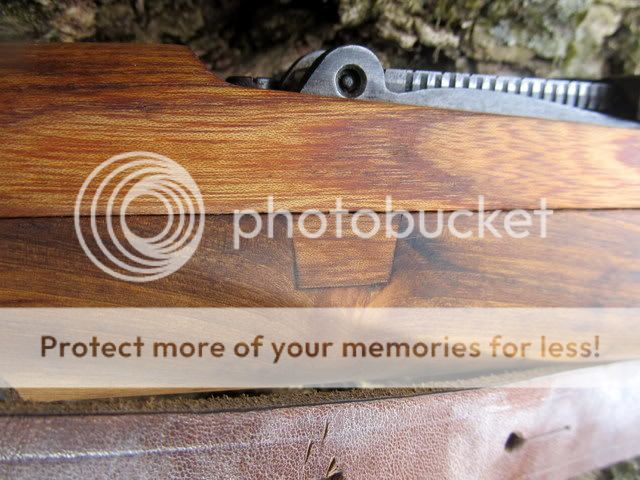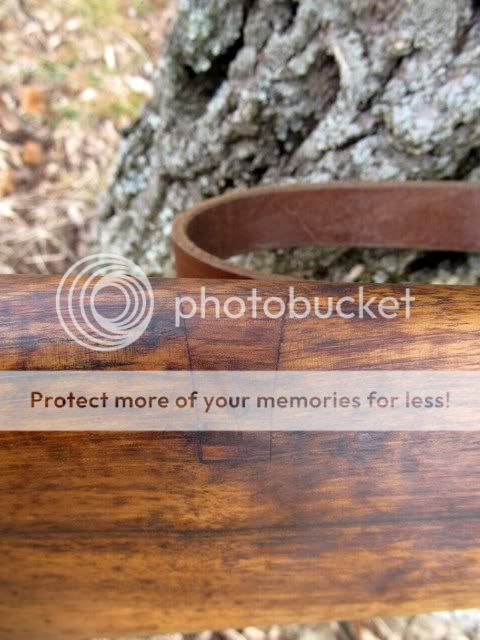Since I posted that picture I'll go ahead and re-post the rest of that story, with a moral: Look carefully for cool surprises as you refinish!
On that rifle:
A pal of mine was buying a Mitchell's refurbished one some years ago. That really tickled his fancy. At the time they had some kind of a deal where they were sellling old beaters as well and I got one of those for all of about $139. When I got it the stock was almost black and oil soaked. Figuring that I had very little to lose with a gentle, minimum-impact refinish job, I steamed the stock and scrubbed and scrubbed, and even eventually sanded just a little, before applying many coats of a penetrating oil.
When I was done I found that the stock had been worked on, and that long ago. After a lot of thinking about it, I've come to believe that these fixes were completed by the original builders and that is just amazing to me.
In two places there are exquisitely crafted dovetailed (and tapered!) patches (what woodworkers refer to as "Dutchman" repairs). I do (or have done, I should say) this kind of work professionally, and I am VERY impressed with this level of craftsmanship. It appears from the figure of the wood that the rouged-out stock had some defects -- probably pinhole knots -- but the builders decided to use it anyway. They (or whomever) hand cut these repairs, one into the butt and one in the thinnest part of the forearm beside the barrel, and fit just plain airtight dutchmen, and then pinned them with wooden pins! You really, REALLY have to look to see these things. In fact, the one on the forearm is no bigger than 3/4"x 1/2" x 1/8" at its wide point.
I can't fathom what set of circumstances would have made wood stock blanks -- for a common, run of the mill military rifle -- so valuable in Yugoslavia as to necessitate several hours of careful hand work by a very skilled artisan to save one from the burn pile. Obviously labor was MUCH cheaper than material at that point!
Only slightly less unbelievable is that this rifle would have survived whatever circumstances brought it to its former dilapidated state, been sold for surplus, imported here, and just about accidentally be passed on to someone who would make the effort to spruce it up, and who would recognize and appreciate the tiny details that show the efforts of the craftsman who put his hands to it.
The repair at the forestock -- You can see where the grain figure swirled there, probably around a knot:
The buttstock repair with wood pin to lock it in:




 Natural-toned oil finishes are best. Either linseed oil or one of the other similar oil finishes like Tung oil, Watco, or Birchwood Casey's TruOil, which does a nice job. What you want to avoid is adding pigments which will get absorbed into raw wood and turn everything muddy, splotchy, and just "dead." There is a real art to using stains for high-quality results, but it takes a lot of care and experience. And it doesn't really reflect the rifle-maker's practices.
Natural-toned oil finishes are best. Either linseed oil or one of the other similar oil finishes like Tung oil, Watco, or Birchwood Casey's TruOil, which does a nice job. What you want to avoid is adding pigments which will get absorbed into raw wood and turn everything muddy, splotchy, and just "dead." There is a real art to using stains for high-quality results, but it takes a lot of care and experience. And it doesn't really reflect the rifle-maker's practices. 
